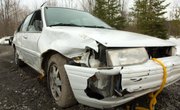Buying a used car from a friend can often make sense. You may already know the car well and how it has been cared for. However, you still need to go through a series of steps just as if you were buying the car from a seller you do not know.
Inspect the Vehicle
You may know how well your friend cared for the car, but unexpected flaws or damage may exist. Take the vehicle to an independent mechanic to inspect the vehicle. The mechanic has specialized equipment and knowledge to tell you what, if anything, needs to be repaired. The mechanic also can give you approximate costs of repairs.
Inspect the Title
Before buying the car, confirm that the title is free and clear. Check to make sure that the title is in your friend's name and does not list a lien holder. For example, seeing the name of a bank marked as the lien-holder means that you're friend doesn't own his vehicle--the bank owns it. Question your friend if the word "salvage" appears on the title. This means that the vehicle has sustained damage that exceeded the value of the car.
Make the Purchase
Agree to a purchase price and pay your friend. Many private sellers use Kelley Blue Book's "Private Party Value" as a starting point for calculating a fair purchase price. To make the deal close faster and make it more convenient for your friend, cash and money orders can be used instead of checks so that your friend doesn't have to wait for a personal check to clear the bank.
Bill of Sale
When you purchase the vehicle, you or your friend should compose a Bill of Sale stating the purchase price of the vehicle, in what form you paid for it and when the sale was completed. Drawing up this document can protect you and serve as proof of purchase in case a dispute ever arises. The Bill of Sale typically also contains the Vehicle Identification Number (VIN). Both you and your friend must sign the Bill of Sale. You may have to have the document notarized. You can find out whether your state requires a notarized Bill of Sale by calling your state or county's Bureau of Motor Vehicles.
Transfer the Title
The back of the title certificate must be completed before you can take ownership. The title certificate contains spaces on the back so that your friend can write in the vehicle's purchase price and odometer reading. Both you and your friend must sign the back of the title to transfer ownership. You may have to do this in the presence of a notary public. When you take the title to the Department of Motor Vehicles to obtain a new title and register the vehicle, you pay any sales tax required by the state.
Buy Insurance
Purchase insurance before you drive the vehicle. Check with your county's Department of Motor Vehicles to ask whether you need to present insurance for registration purposes. Whether insurance is required for registration purposes or not, you must have insurance before you drive the car away. Contact your insurance company the day you take control of the car and ask to add it to your existing coverage or buy a new policy.
References
Writer Bio
Matthew Schieltz has been a freelance web writer since August 2006, and has experience writing a variety of informational articles, how-to guides, website and e-book content for organizations such as Demand Studios. Schieltz holds a Bachelor of Arts in psychology from Wright State University in Dayton, Ohio. He plans to pursue graduate school in clinical psychology.

